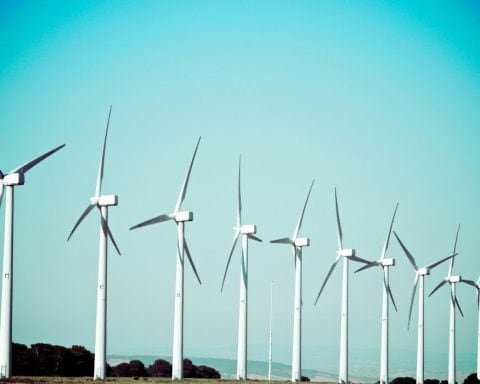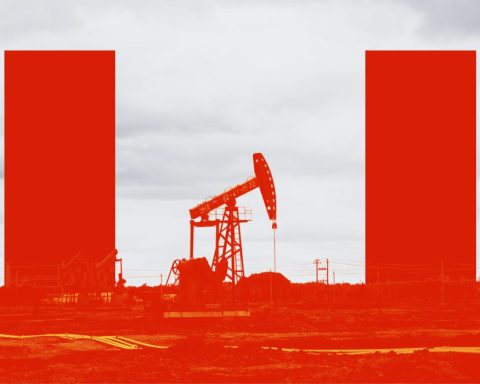Prime Minister Mark Carney rode to victory in Canada’s federal election on April 28 while offering two seemingly contradictory promises: supporting Canada’s oil and gas industry while confronting climate change.
In his first act as prime minister in March, Carney sent a clear signal that he wants to move past the divisive debates on energy and climate change that prevailed under Justin Trudeau. Taking office just prior to the Paris climate summit, Trudeau enacted sweeping climate policy that included a carbon tax and a raft of regulations aimed at driving a clean energy transition – over the objections of the federal opposition and Conservative-led provinces.
Trudeau stepped down in January, and after winning the Liberal leadership race to replace him, Carney immediately axed the consumer portion of the carbon tax, which reduced gasoline prices by 17 cents per litre. The consumer levy had been a key pillar in Trudeau’s climate strategy. It was also a rich target for Conservative Party Leader Pierre Poilievre, who campaigned on support for the oil and gas sector with little heed for climate change policies.
Carney’s go-to campaign phrase on energy is, in fact, borrowed from former Conservative prime minister Stephen Harper, who vowed to make Canada an “energy superpower.” Carney has broadened that ambition to include renewable and other forms of clean energy. “It’s time to build Canada into an energy superpower in both clean and conventional energy,” he said in his election victory speech. “And it’s time to build an industrial strategy that makes Canada more competitive while fighting climate change.”
Carney’s concessions might not win converts
Carney won the Liberal Party’s fourth consecutive mandate despite winning few seats in Saskatchewan or Alberta, where Trudeau’s climate policies were anathema to many voters who saw them as an attack on their economic prosperity.
He proposes to establish “energy corridors” that would speed approvals of infrastructure like transmission lines and pipelines, he vows to streamline regulatory processes to avoid lengthy delays, and he supports carbon capture and storage technology, which the oil and gas industry is relying on to cut its greenhouse gas emissions.
During a campaign stop in Alberta, he said he would support the construction of an oil pipeline to eastern Canada to “displace imported oil.” Still, his conciliatory talk is unlikely to win converts from the oil and gas sector.
During the campaign, Alberta Premier Danielle Smith published a list of nine non-negotiable demands. They include scrapping the Liberal government’s planned emission cap on producers, establishing a six-month timeline for review of all projects, repealing the ban on oil tanker traffic off British Columbia’s more northerly coastline, ending the federal backstop for the industrial carbon price, and abandoning ambitious regulations to drive adoption of electric vehicles.
These demands are unworkable for Carney given that they would take key climate and environmental protections out of federal hands, and would alienate parts of the Liberal base, especially in Quebec, where support for climate action remains high.
Carney can ill afford to anger progressive voters, given his failure to secure a majority government and the prospect of an election within two years.
While his support for the oil and gas sector is not what the Alberta premier is demanding, it worries climate activists. Carney’s references to investing in conventional energy “leave a lot of uncertainty,” Caroline Brouillette, executive director of Climate Action Network Canada, said in a statement issued during the campaign. “If that’s a euphemism for continuing the status quo approach of expanding fossil fuels, that means pipelines going across Indigenous lands, many billions [of dollars] sunk into stranded assets, and climate harm caused by increased emissions,” she said.
Climate change mitigation is still in the cards
As he supports more pipeline capacity for oil and gas producers, Carney is also promising action to increase clean energy infrastructure, particularly interprovincial transmission ties that will help decarbonize and electrify the economy. He has also pledged support for the mining of critical minerals that are needed to enable a shift to a more electric energy system.
There are a number of areas where Carney can build on the work of his predecessor to advance Canada’s transition to a lower-carbon economy. He has promised to expand the charging network, drive energy efficiency in buildings and invest in the clean energy infrastructure. He could also reinvigorate a flagging effort to ensure that climate-related risks are accounted for and disclosed by corporations. As governor of the Bank of England, Carney led the international effort to develop disclosure standards, and encourage international corporations to adopt them. The standards, which are being adopted in Europe, require companies to develop strategies that are consistent with a future net-zero world.
In the past year or so, many companies, including Canada’s big banks, have retreated on commitments made at the United Nations climate summit in Glasgow in 2021.
The Canadian Securities Administrators – the umbrella group for provincial regulators – has halted their work that aimed to make climate disclosure mandatory for publicly traded companies. The U.S. Securities and Exchange Commission, which oversees the U.S. market, has also stopped work on climate disclosure, reflecting the Trump administration’s opposition to any regulatory efforts to combat climate change.
Given his pedigree as a central banker – and later adviser to the UN Secretary-General on climate finance – Carney could champion a global effort to embed the pricing of climate risks and opportunities in the international financial system.
Shawn McCarthy is an independent writer and senior counsel with Sussex Strategy Group.
The Weekly Roundup
Get all our stories in one place, every Wednesday at noon EST.





